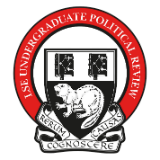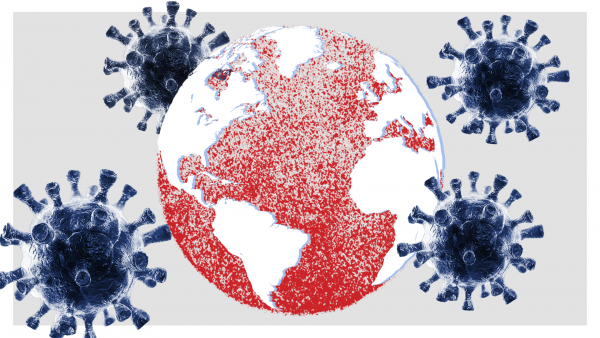Written by Jasper Shuhan Lan
1.0 Introduction
As we look ahead towards future global threats, it is critical for governments to learn from the COVID-19 pandemic. In my opinion, the greatest lesson for governments may be to appreciate the rise of the second modernity and reflect its implications in policy-making.
1.1 The Second Modernity
First conceptualised by late german sociologist Prof. Ulrich Beck, the second modernity is characterised by the following:
- Unintended consequences of industrial developments in the ‘first’ modernity leading to self-inflicted risks.
- Truly democratic global risks that transcends notions of social class and threaten all equally.
- Evolution of fundamental government goals from wealth distribution to risk distribution and minimization.
2.0 Risk
‘Risks’ are hypothetical threats to human security that may or may not become real. They arise due to increased adoption of modern technology, are largely invisible to the public and may necessite advanced technologies and expertise to even detect. Examples include increased probability of zoonotic pandemics like the current COVID-19 pandemic as cities expand and humans encroach into biodiverse regions (Vidal, 2020). As modern risks are largely invisible to the public, we are completely reliant on experts and authorities to educate us on various risks. “Facts” are hence contingent on experts’ good judgement and are ‘particularly open to social definition and construction’. In the absence of trust it is easy to dismiss facts as mere products of methodological errors or biases.
Some may doubt the severity of the COVID-19 virus and ‘become small, private alternative experts’ (Beck & Ritter, Risk society: towards a new modernity) in the pandemic as they research on the Internet independently. With rampant misinformation online, this presents opportunities for misinformation to take root, preventing society from taking appropriate precautions and concentrating risk in the society (Kluger & Space, 2020) .
Hence, a lesson for governments may be that public trust in government institutes is critical – a lesson well illustrated by New Zealand. The high trust in the Arden administration by the public (Miller, 2020) helped convince the latter that the threat of the virus was real, leading to widespread adoption of pandemic precautions and New Zealand’s success in combatting the pandemic.
3.0 Cosmopolitanization
Another lesson lies in the idea of cosmopolitanization. Traditionally, modern society is equated with society organised in territorially limited nation-states [5]. However, globalisation has inextricably tied societies together and global risks like the COVID-19 pandemic threaten all equally (the virus does not discriminate by race, religion or nationality). Such risks, as Prof. Beck writes, are ‘every nation’s and every person’s concern’ because they are fundamentally embedded in a new force he calls ‘reflexive cosmopolitanization’. Cosmopolitanization causes international communities to emerge. Extending beyond boundaries of nation-states, such communities seek to resolve certain international risks which threaten their international membership, eroding traditional notions of countries and states.
While dissolving borders and governments is clearly too extreme and anarchistic, the lesson remains that international collaboration has become a necessity for survival.
Adopting an isolationist stance, as demonstrated by the United States, is likely to fail. Under President Donald Trump, the US has adopted an ‘America First’ policy. With America looking inwards as the COVID-19 pandemic raged elsewhere, the US failed to prepare adequately for the pandemic. Shunning WHO test kits for locally manufactured kits resulted in wastage of precious time as the kits developed by CDC proved faulty (Boburg, Jr., Satija, & Goldstein, 2020). Similarly, with global supply chains severely disrupted by COVID-19 lockdowns, many countries are pushing to shift supply chains back home to improve supply chain resilience. Unfortunately, as economists (and The Economist) have pointed out, the solution to more resilient supply chains lies in greater diversification rather than ‘domestication’, which concentrates risk. (Has covid-19 killed globalisation?).
4.0 Inequality of Risk Distribution
Finally, risk distribution is unequal. To elaborate, I shall ground this in the Singaporean COVID-19 response. In the early days of the pandemic, the Singaporean government succeeded in controlling the pandemic with widespread testing and contact tracing. However, the pandemic soon reached migrant worker dormitories in Singapore, sparking a massive spike in infection rates as seen in Fig. 1.
Fig. 1: Daily new coronavirus cases, Singapore
The foreign labourers were housed in cramped dormitories with dismal living conditions (Sallie Yea, 2020), providing ripe conditions for the rapid spread of the COVID-19 virus. Evidently, risk is asymmetrically distributed: Singaporeans mostly live in acceptable housing conditions (which reduces risk of infection) while foreign labourers do not and thus, suffer high risks of infection. Despite erosion of the notion of class in the face of universal risks inequality remains and the ability to reduce impacts of risks is asymmetric in society. Richer Singaporeans are more able than foreign labourers, for example, to move to more spacious, safer abodes. Risk of COVID-19 infection is unequally concentrated among the poorer migrant workers.
Here lies another lesson for governments: to be aware of inequalities in risk distribution. Despite being warned of the risk of outbreaks among migrant workers as early as February [10], the Singaporean government failed to pay attention to the marginalised group. Governments should pay attention to inequalities and prioritise assisting disenfranchised groups, especially since total risk is not constant and conserved – infections among higher-risk groups can increase risk for the rest of society as well.
5.0 Conclusion
In conclusion, I have sought to use the concept of the second modernity to explain several takeaways from the COVID-19 pandemic:
- Public trust is essential.
- International cooperation is critical.
- Inequalities, which have been exposed by the pandemic, should not be ignored.
Ultimately, I believe that the COVID-19 pandemic is one in a long list of events in recent history that point to increasingly globalised risks. I believe the greatest, overarching lesson for governments is an appreciation for the risk society we live in today.
Bibliography
[1] Vidal, J. (2020, April 07). Human impact on wildlife to blame for spread of viruses, says study. Retrieved September 30, 2020, from https://www.theguardian.com/environment/2020/apr/08/human-impact-on-wildlife-to blame-for-spread-of-viruses-says-study-aoe
[2] Beck, U., & Ritter, M. (2013). Risk society: Towards a new modernity.
[3] Kluger, J., 13, A., 8, A., & Space, A. (2020, July 23). The Misinformation Age Has Exacerbated the COVID-19 Pandemic. Retrieved September 30, 2020, from https://time.com/5870464/coronavirus-pandemic-misinformation/
[4] Miller, A. (2020, August 14). How New Zealand eliminated the coronavirus for over 100 days, only for the virus to return. Retrieved September 30, 2020, from https://www.businessinsider.com/how-new-zealand-beat-coronavirus-testing-tracing trust-in-government-2020-5
[5] Kiss the Frog: The Cosmopolitan Turn in Sociology. (n.d.). Retrieved September 30, 2020, from http://globaldialogue.isa-sociology.org/kiss-the-frog-a-cosmopolitan-turn-in-sociology/
[6] Boburg, S., Jr., R., Satija, N., & Goldstein, A. (2020, April 03). Inside the coronavirus testing failure: Alarm and dismay among the scientists who sought to help. Retrieved September 30, 2020, from https://www.washingtonpost.com/investigations/2020/04/03/coronavirus-cdc-test-kits-public-health-labs/?arc404=true
[7] Has covid-19 killed globalisation? (n.d.). Retrieved September 30, 2020, from https://www.economist.com/leaders/2020/05/14/has-covid-19-killed-globalisation
[8] Sallie Yea Lecturer in Interdisciplinary Studies. (2020, September 06). This is why Singapore’s coronavirus cases are growing: A look inside the dismal living conditions of migrant workers. Retrieved September 30, 2020, from https://theconversation.com/this-is-why-singapores-coronavirus-cases-are-growing-a -look-inside-the-dismal-living-conditions-of-migrant-workers-136959
[9] Beck’s creative challenge to class analysis: From the rejection of class to the discovery of risk-class. (n.d.). Retrieved September 30, 2020, from https://www.tandfonline.com/doi/full/10.1080/13669877.2017.1351464 [10] ‘We’re in a prison’: Singapore’s migrant workers suffer as Covid-19 surges back. (2020, April 23). Retrieved September 30, 2020, from https://www.theguardian.com/world/2020/apr/23/singapore-million-migrant-workers-s uffer-as-covid-19-surges-back
[11] Japan Today. (n.d.). The COVID-19 crisis and risk society in the second modernity. Retrieved September 30, 2020, from https://japantoday.com/category/features/opinions/the-covid-19-crisis-and-risk-societ y-in-the-second-modernity
[12] Tooze, A. (2020, August 01). The Sociologist Who Could Save Us From Coronavirus. Retrieved September 30, 2020, from https://foreignpolicy.com/2020/08/01/the-sociologist-who-could-save-us-from-corona virus/
[13] Scientific Electronic Library Online. (n.d.). Retrieved September 30, 2020, from https://www.scielo.br/scielo.php?Script=sci_arttext



